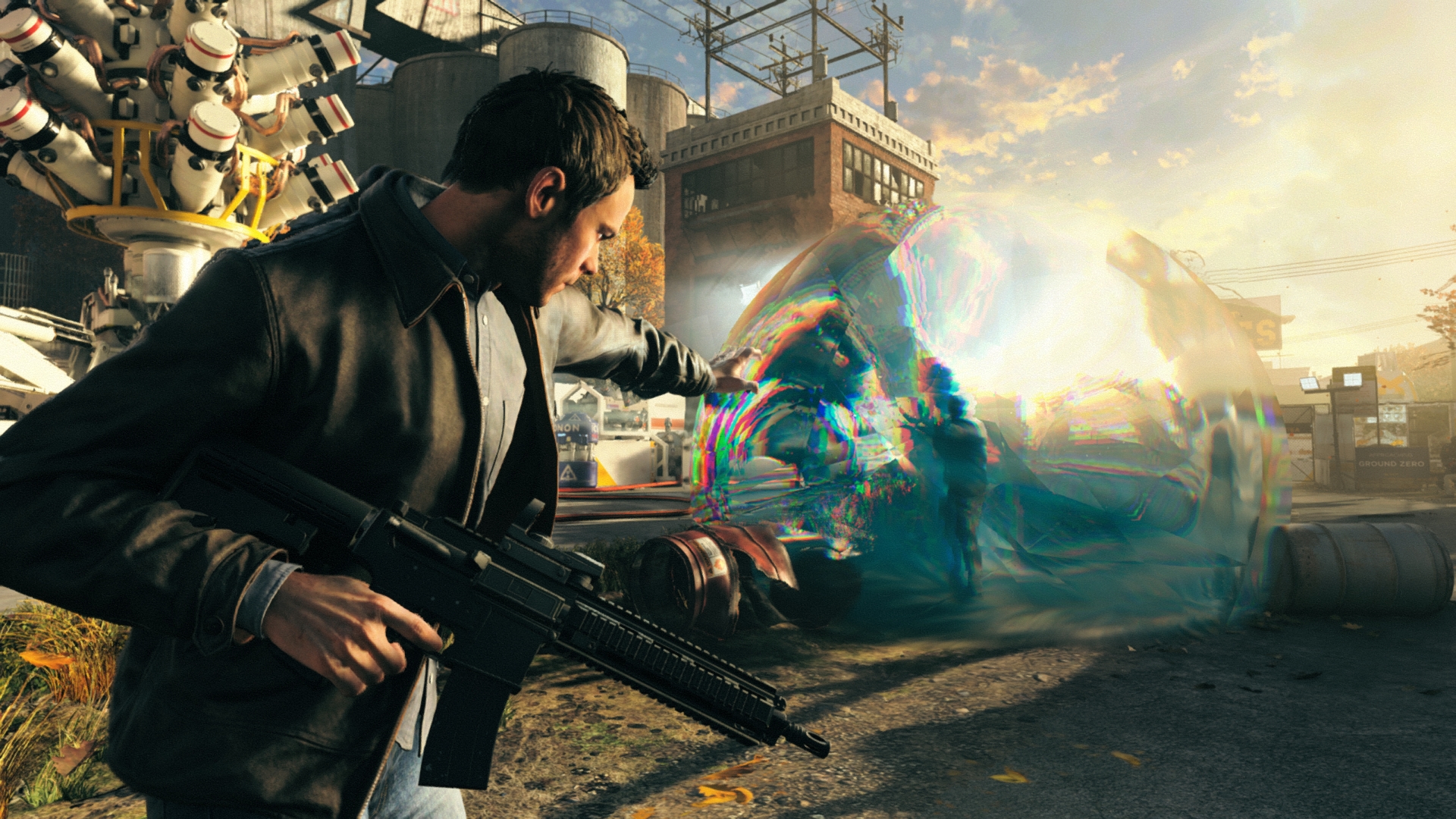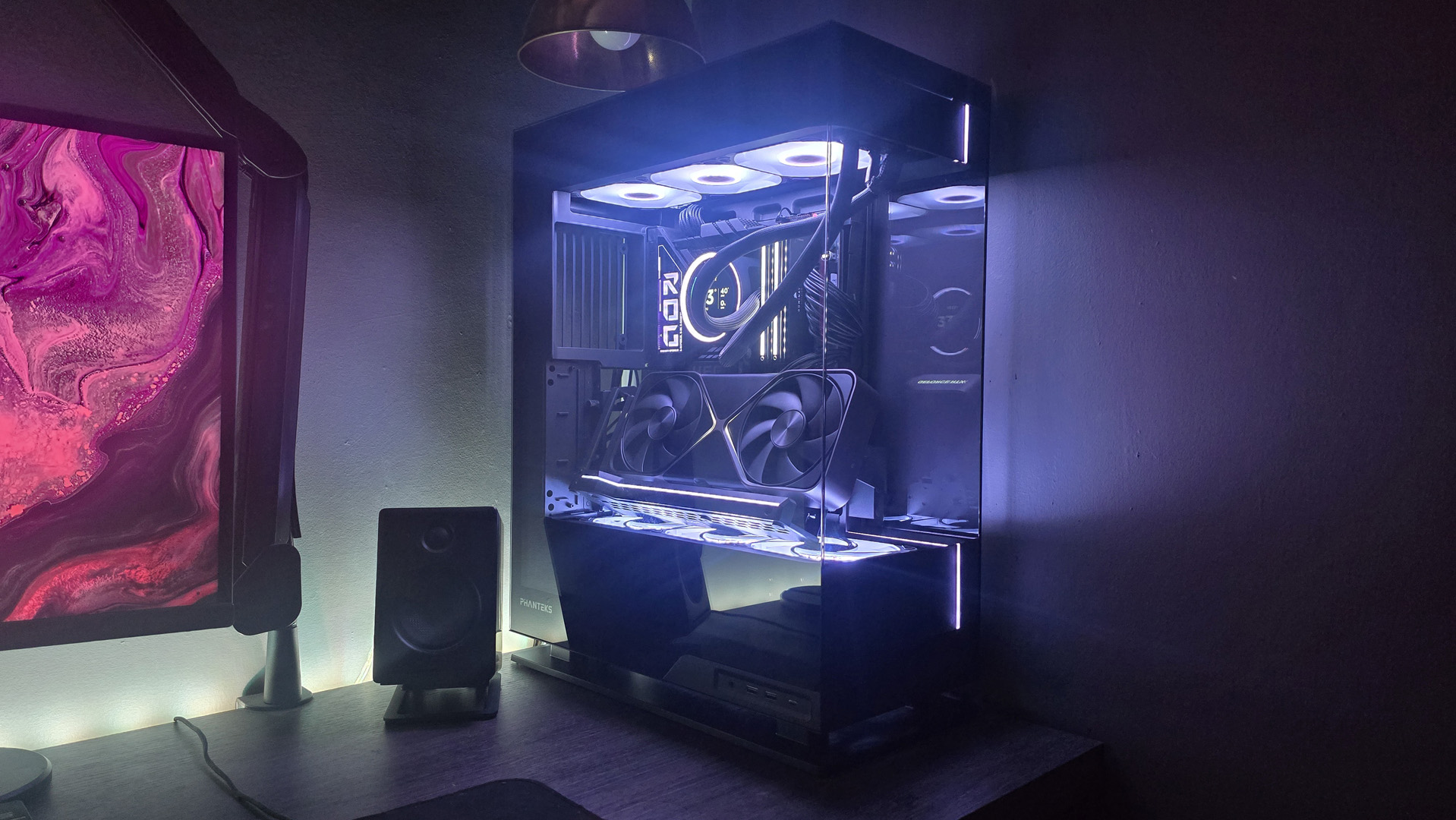Our Verdict
An average shooter tied to a compelling, confident story, but the TV show is ultimately an expensive, if entertaining, gimmick.
PC Gamer's got your back
What is it? A time-bending shooter from the creator of Max Payne and Alan Wake.
Expect to pay £45/$60
Developer Remedy Entertainment
Publisher Microsoft Studios
Reviewed on GeForce GTX 970, Intel i7-5820K, 16GB RAM
Multiplayer None
Link Official site
A physics experiment goes horribly wrong, granting everyman Jack Joyce incredible time-bending powers. He can deflect bullets, teleport across rooms, freeze or reverse time, and unleash deadly bursts of energy—abilities that come in handy when he learns he’s on a mission to save the world. But the evil Monarch corporation, led by his former friend Paul Serene, has other ideas, and Joyce finds himself being hunted across the fictional East Coast city of Riverport by a ruthless private army.
Quantum Break is a story-heavy action game by Max Payne creator Remedy. As well as a ten-hour campaign featuring the kind of cinematic combat the Finnish studio is known for, there’s a live-action TV show that runs alongside it. Episodes play between acts, and the scenes change—sometimes dramatically, sometimes subtly—according to decisions you make and things you interact with. It’s an interesting idea in theory, but you quickly realise that your impact on the outcome of the show is negligible, and that the game attached to it is a disappointingly average shooter.
Shot clock
Remedy has always been comfortable embracing pulpy genre fiction, whether it’s the paperback horror of Alan Wake or Max Payne’s hard-boiled noir. Now they’re embracing sci-fi, and the result is an entertaining, confident, and enjoyably melodramatic story that ended up being the highlight of the game for me. A solid cast of talented B-list actors help bring the script to life including Aidan Gillen (The Wire, Game of Thrones), who chews the scenery brilliantly as villain Serene, and Shawn Ashmore (X-Men) as likeable hero Joyce. It’s Remedy’s most self-serious game to date, missing some of the knowing humour of their earlier work, but it spins an engaging, energetic yarn that kept me interested all the way through.
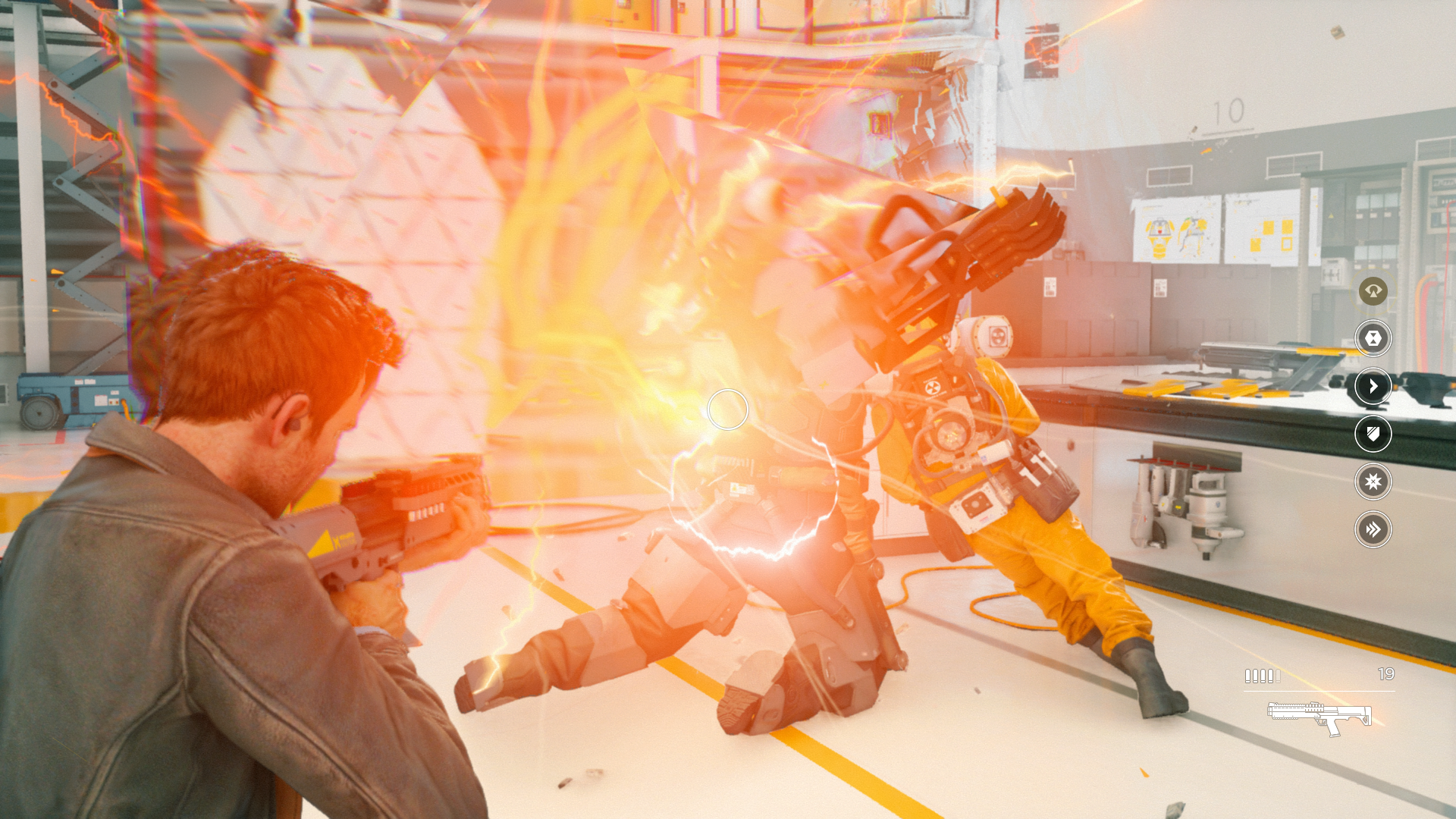
The conflict between Joyce and Monarch erupts, inevitably, in gunfire. Quantum Break is primarily a third-person shooter, and you spend a good portion of the game firing guns at people who are also firing guns at you. But it’s not really a cover shooter, at least in the usual sense. Joyce crouches automatically behind objects of a certain height, but firing a gun makes him stand up, and you can’t pin yourself against surfaces or blind-fire. This is, I think, to encourage you to keep moving and take advantage of his time powers, rather than playing it like Gears of War.
Joyce’s dash ability lets you basically teleport across the level for a short distance—and if you aim your gun at the end, time will briefly slow down to give you a chance to line up a headshot. Or you can toss a bubble of energy to slow an enemy down, then fire into it to create a throbbing, fiery mass of bullets that are simultaneously unleashed when it bursts. A charged attack lets you toss a large ball of energy that can kill a group of enemies instantly, and you can freeze time for a few seconds to help you flank. And if you’re low on health, you can pop a shield that will deflect bullets for a few seconds. There are more, but those are the ones I used the most.
They look amazing, especially the way the level fragments and ripples around you when you use them, and I like how you can experiment by combining different powers. But once the initial buzz wears off they feel slightly gimmicky, and fail to make up for the fact that Quantum Break is, really, a fairly basic shooter. The enemies in particular are amazingly unimaginative: the shotgun guy who charges you, the brute with a weak spot on his back, the sniper with the big, obvious laser sight. But I did enjoy fighting the guys who can teleport around the level, and later there’s an enemy that makes your powers stop working if you get near them. Both complement the game’s combat, while the others feel like they’ve been drafted in from the mercenary army that supplies soldiers for every third-person shooter.
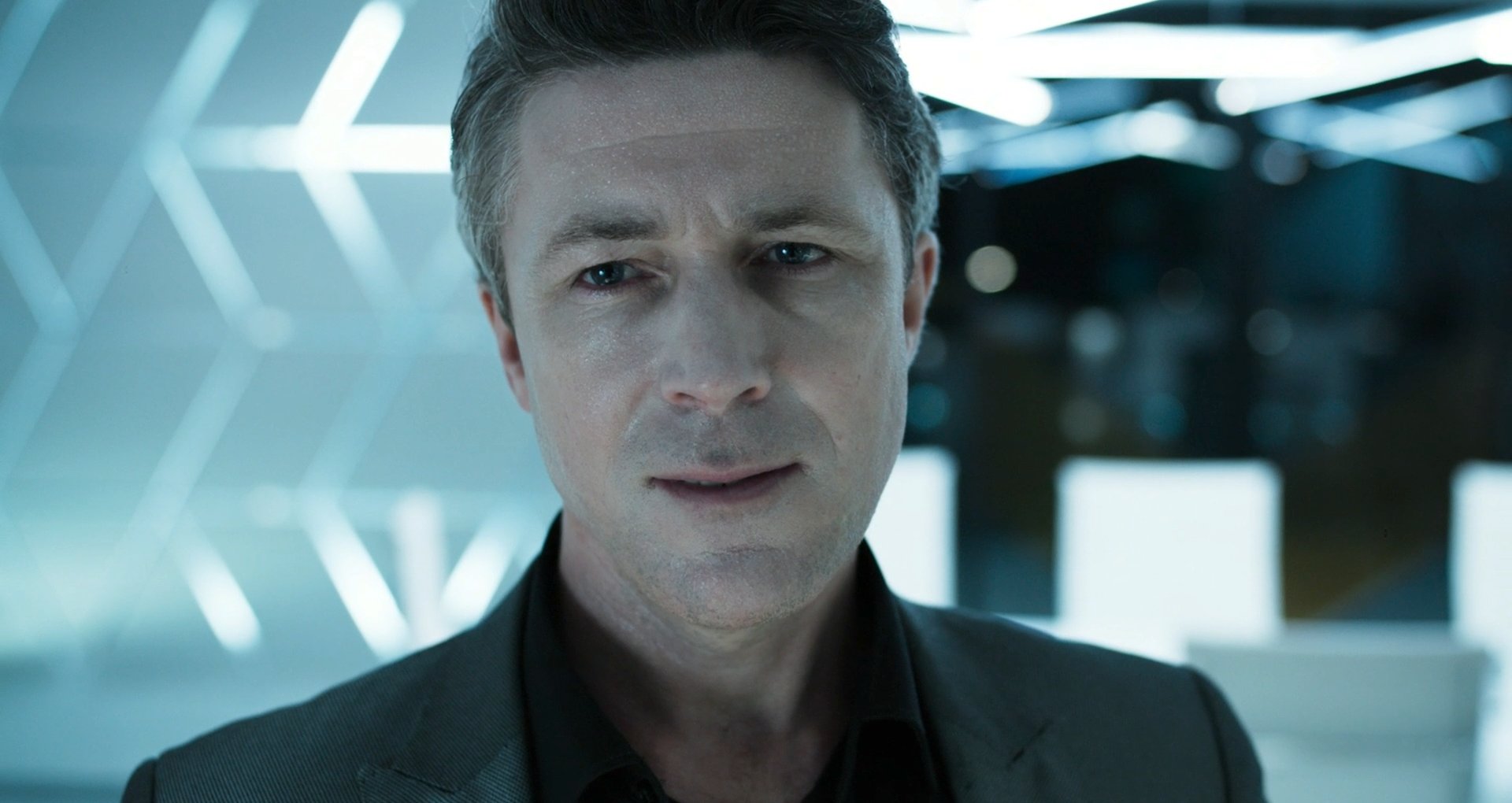
Performance With a GTX 970 I had to play on a mix of medium/high settings to get a playable frame rate at 1080p. And even then it was inconsistent, dipping as low as 20-25 when things got really bad. The poor optimisation ultimately hampered my enjoyment of the game, and I've heard reports of similar issues, even on better GPUs.
Settings Volumetric lighting, shadow resolution, shadow filtering, texture resolution, SSAO, screen space reflections, effects quality, global illumination, anti-aliasing (on/off)
TV on the Radeon
There are moments of calm, thankfully, where you can explore and learn more about the story. The real-world locations aren’t that fascinating—train yards, warehouses, offices—but Remedy’s world-building and attention to detail is remarkable. Almost every environment feels realistic, lived-in, and hand-crafted. There are frequent interaction points that reveal interesting backstory and, sometimes, affect the TV show. If, like me, you’re the type of person who likes to poke around in every corner of a level before moving on, your curiosity will be rewarded. Or you can just ignore all this stuff entirely and focus on the story at hand. In general the firefights are nicely spaced out, preventing the combat fatigue that often plagues games like this.
Another attempt to break up the combat isn’t quite as successful. There are, lamentably, platforming sections in Quantum Break. One takes place on a bridge that’s just been torn apart, and you have to navigate Joyce through the twisted metal and exploding cars. Things are made more difficult by the fact that time is ‘stuttering’, meaning this debris is constantly moving and distorting. It certainly looks cool, and the stutter effects are a real visual treat, but see past it and you’ll realise that you’re just leaping between platforms and dodging moving obstacles. This might have been a tolerable distraction if it wasn’t for the lumbering, sluggish character movement, which clearly wasn’t designed for platforming. You feel like you’re wading through syrup, and if you make a mistake you have to endure a loading screen as the game whisks you back to the last checkpoint.
The production values are incredible throughout, but fail to hide the fact that, underneath all the gloss, Quantum Break is a completely prosaic action game. It's helped a bit by the live action show, which is decent. If it were on TV you probably wouldn’t watch it, but it’s professionally made, mostly well-acted, and does a good job of fleshing the characters out—particularly the villains. It focuses on Monarch rather than Joyce, and Lance Reddick (The Wire) is subtly menacing as sinister CEO Martin Hatch. Ultimately though, it feels unnecessary. Some scenes change based on binary decisions you make at so-called junctions, but the overall narrative remains largely unaffected. Even so, I still enjoyed the show, and always looked forward to the next episode to learn more about the characters. But it isn’t connected to the game in any meaningful way, making its existence feel arbitrary.

Quantum broke
Remedy has a track record of developing quality PC versions of its games, but Quantum Break—one of the first big releases for Microsoft’s Universal Windows Platform—runs poorly, even on high-end systems. It’s incredibly demanding (or badly optimised, depending on how look at it). Even on low settings at 1080p with a GTX 970, it struggles to maintain a steady frame rate.
This combined with blurry edges, pop-in, and fuzzy shadows does a disservice to the otherwise impressive visuals. And the inconsistent frame rate makes moving and shooting feel frustratingly cumbersome when the screen gets busy. It’s a disappointing PC port, and I have no idea why the game costs £50 on the Windows Store in the UK while Xbox One players can get it for £45 (the prices are consistent on the US store). If Microsoft wants to improve its reputation with PC gamers, they’re off to a terrible start.
Quantum Break has some genuinely brilliant set-pieces and a better story than most action games. But overall it’s an unremarkable shooter that tries to distract you from its lack of ideas with dazzling production values and polish. It’s a lavish, passionately made thing, but more concerned with the plot than the game holding it all together. And while the TV show concept seems new and exciting, it’s really just a series of long, high-definition FMV cutscenes presented as something more. Despite all this, Remedy fundamentally knows how to make an exciting action game, and Quantum Break has its moments. But they’re overshadowed by dumb platforming, uninspiring enemy design, and a lacklustre PC port.
Update: Since our review was first published, the price of Quantum Break has dropped to £44.99 in the UK, in line with its Xbox One counterpart.
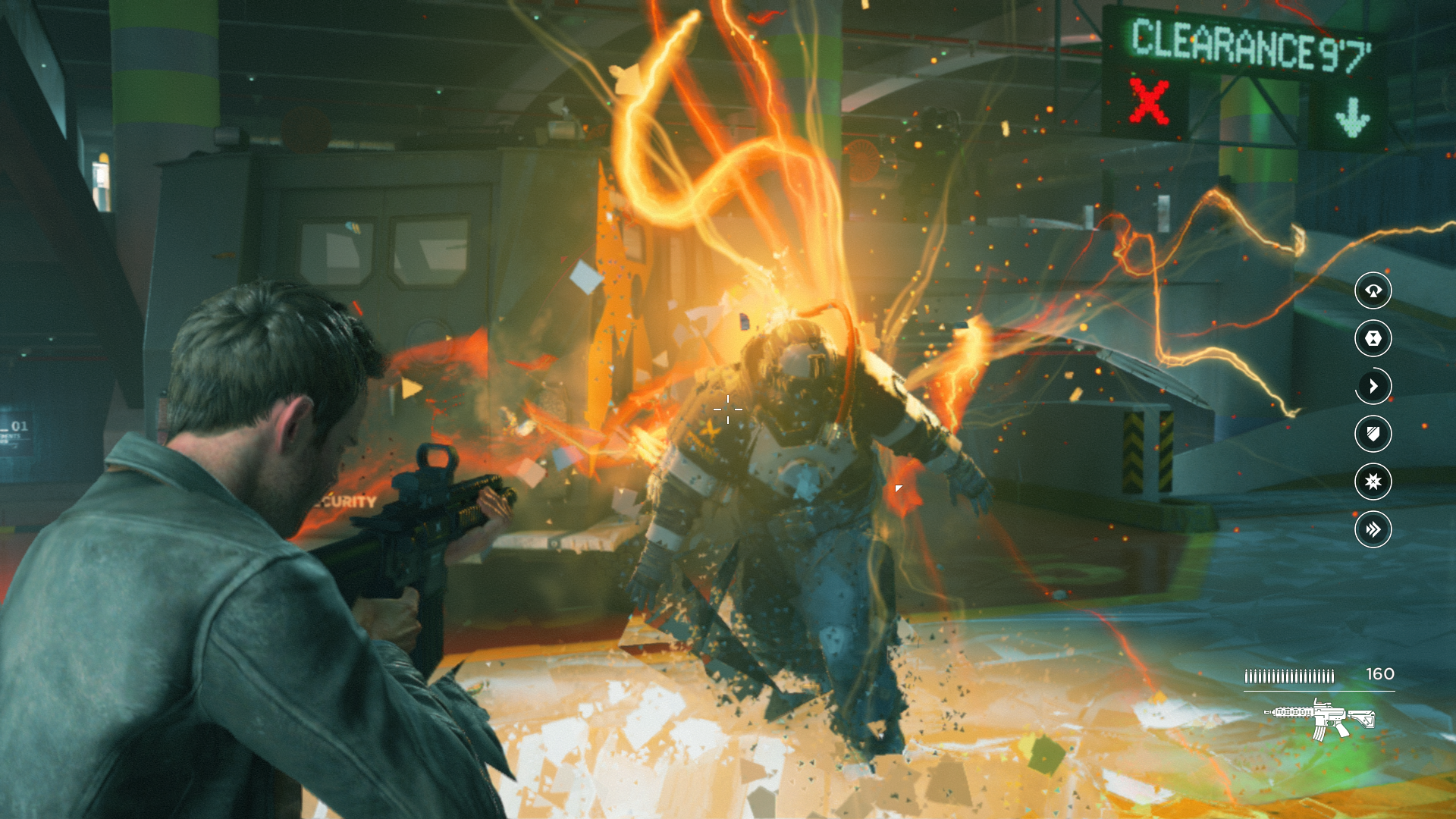
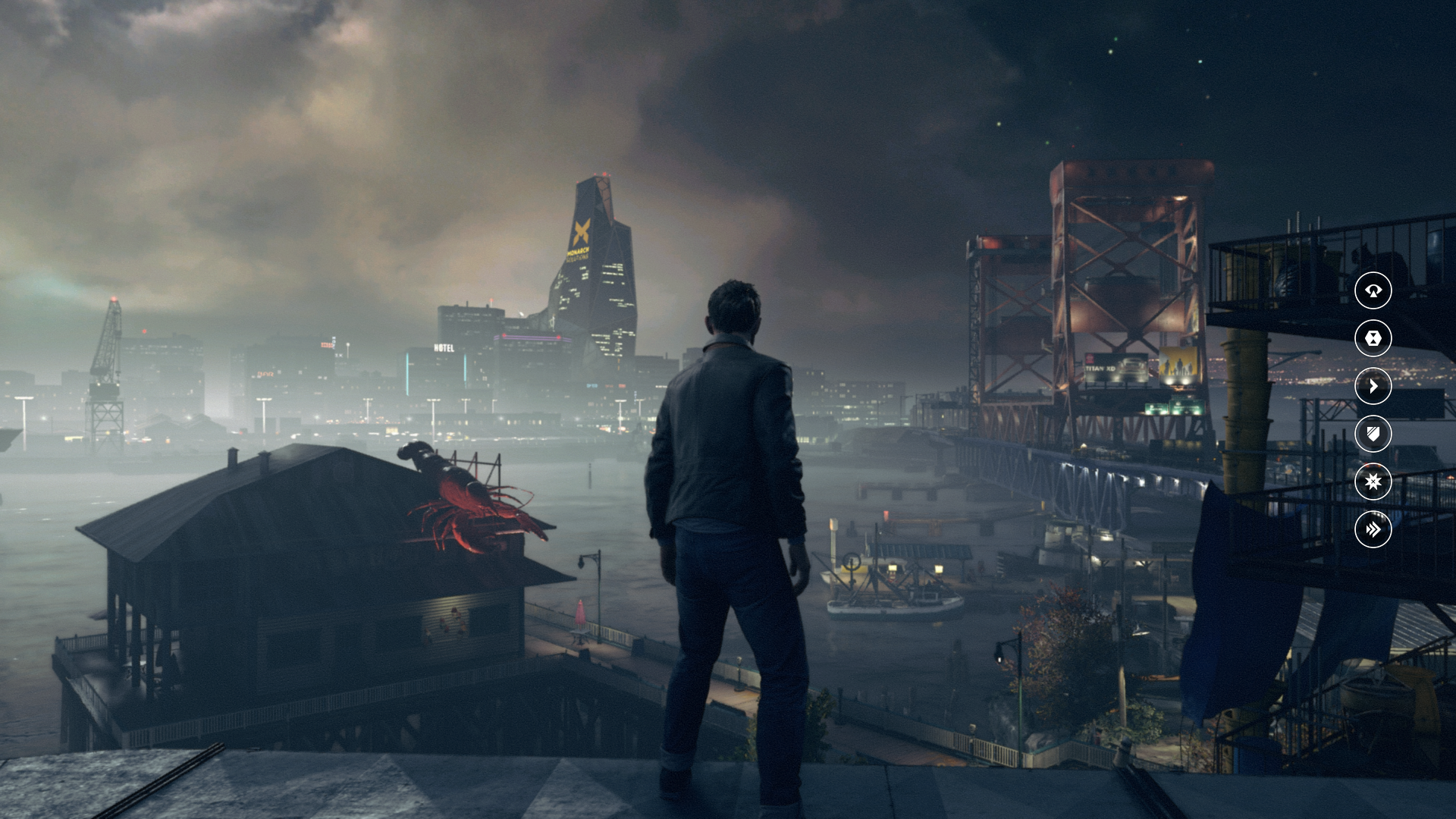

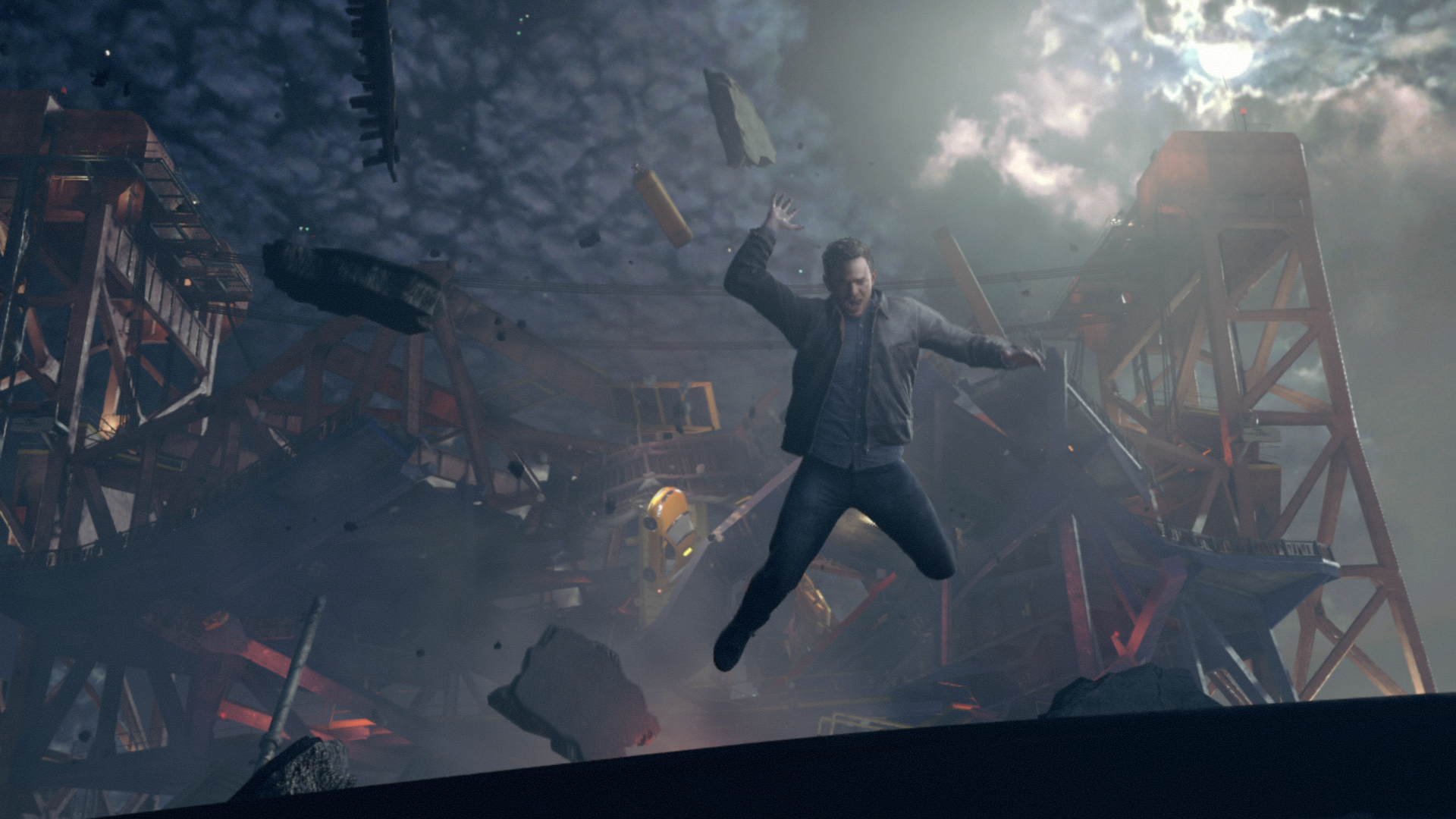
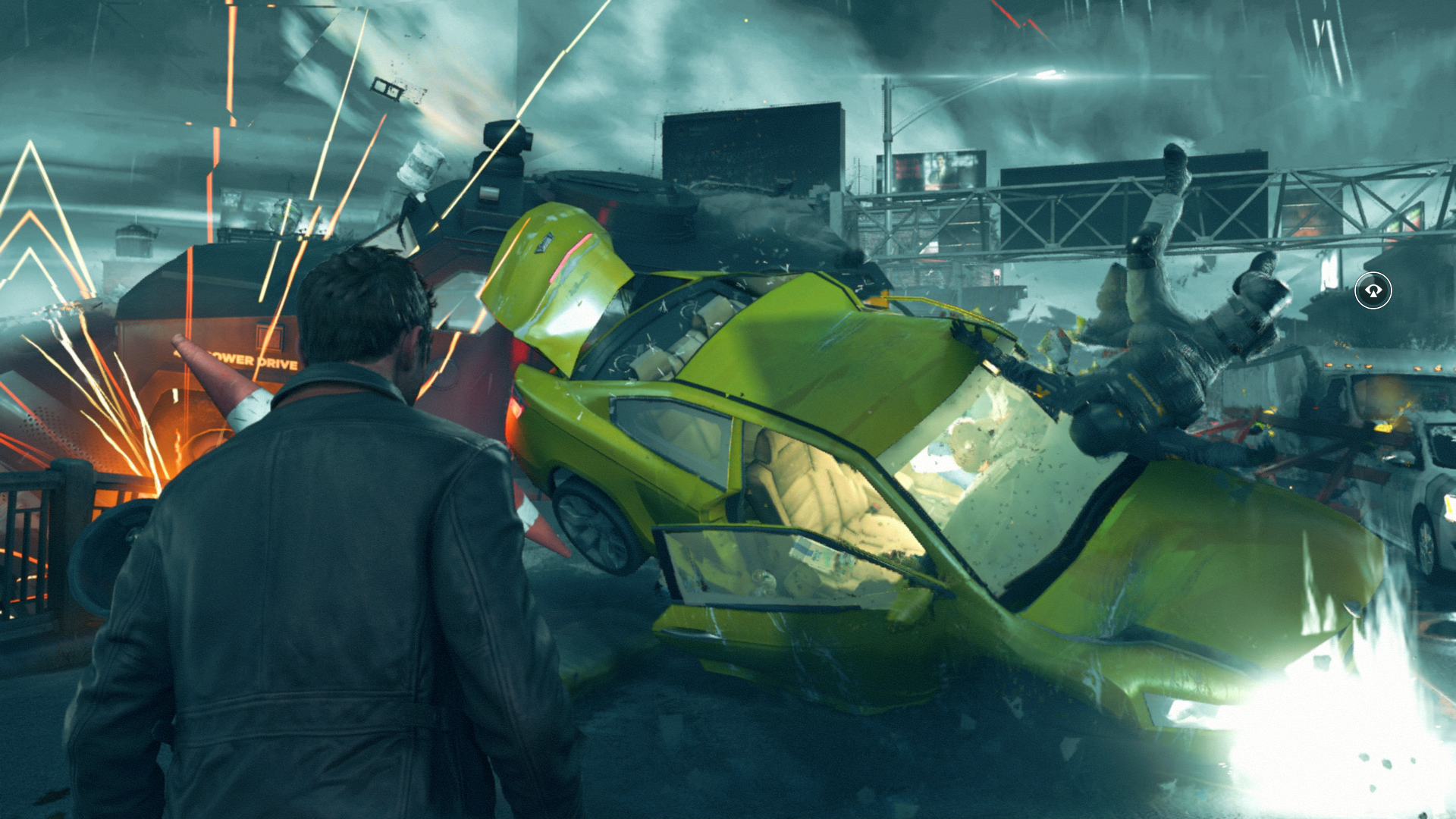
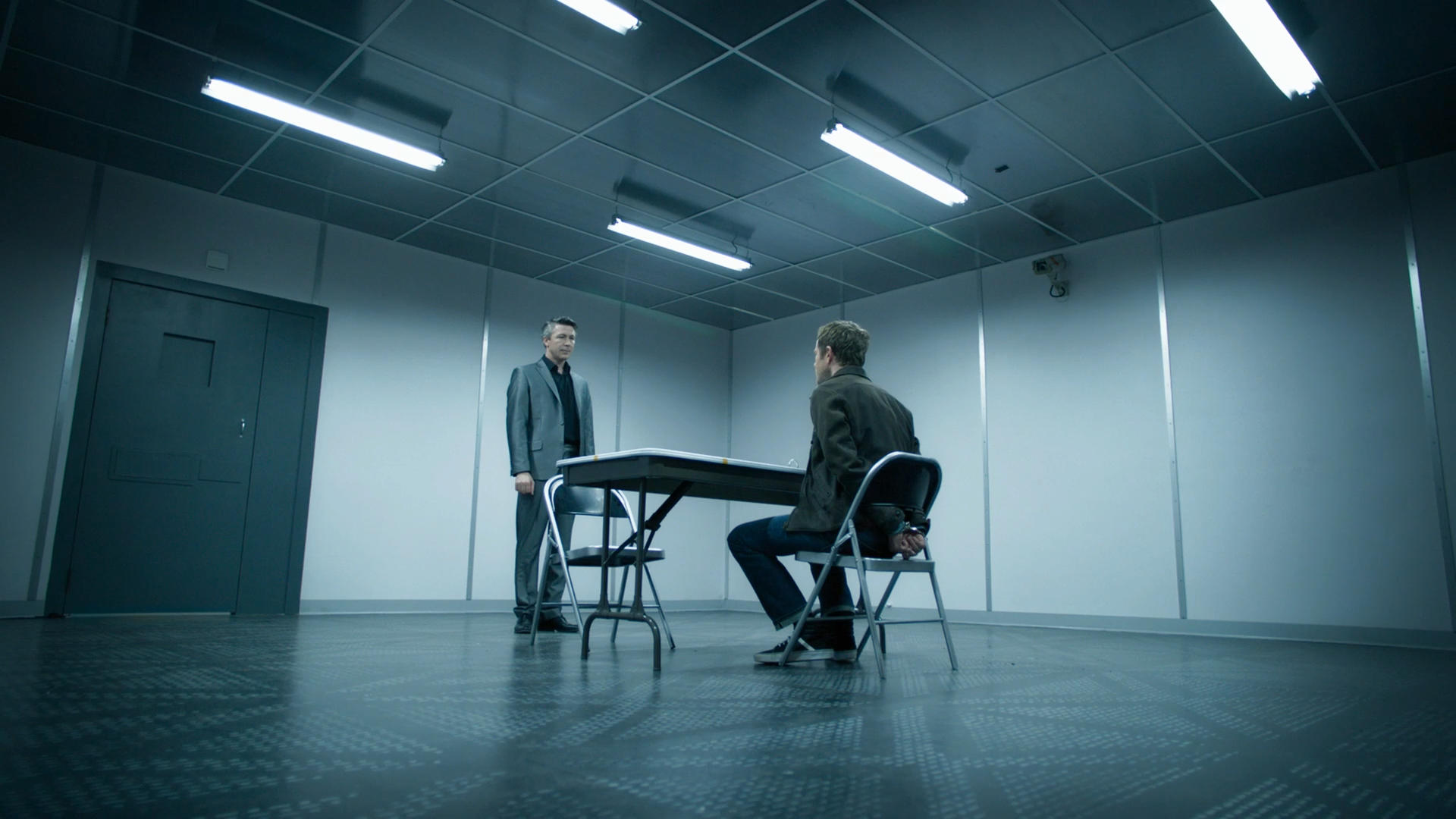
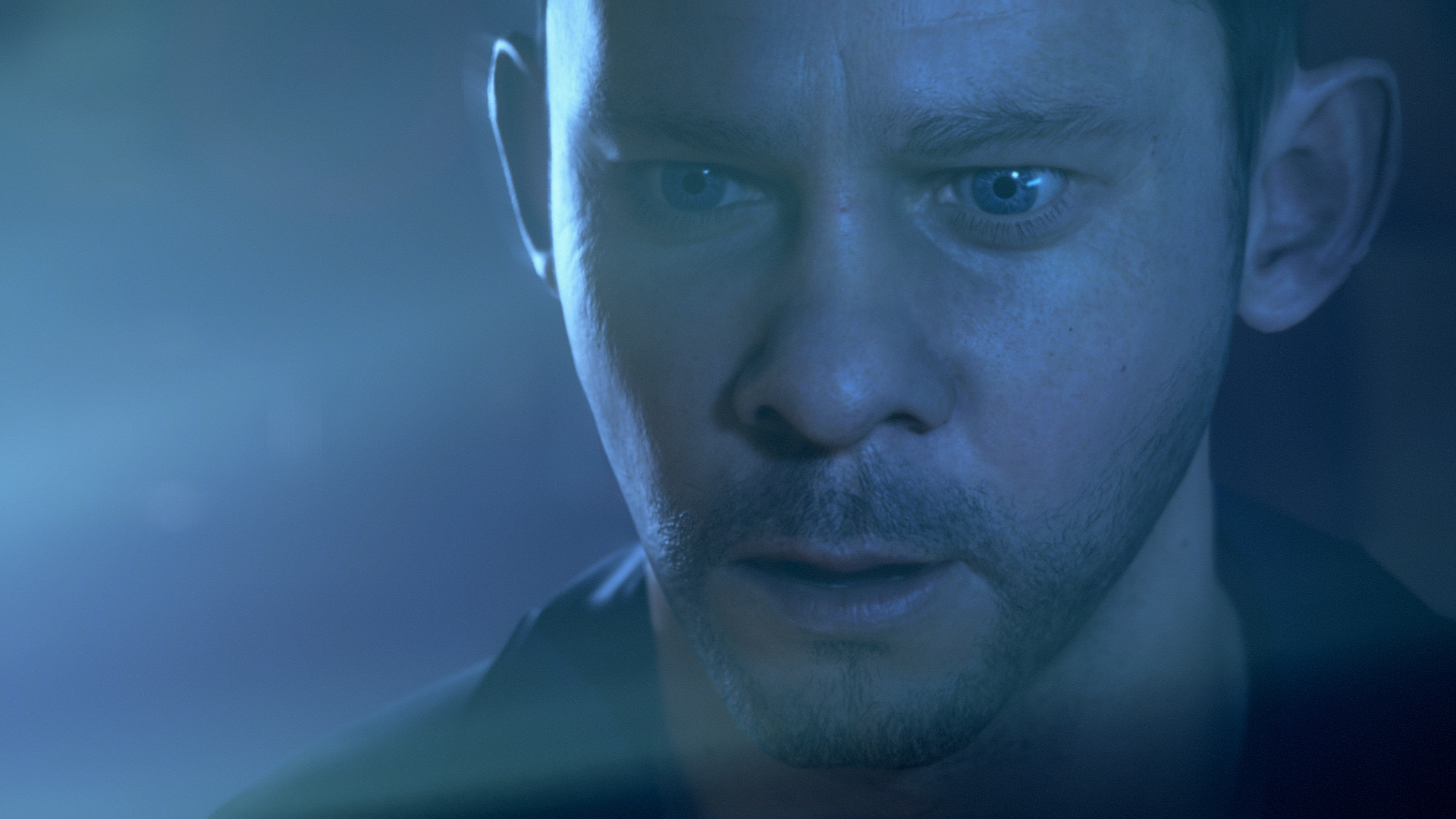
An average shooter tied to a compelling, confident story, but the TV show is ultimately an expensive, if entertaining, gimmick.
If it’s set in space, Andy will probably write about it. He loves sci-fi, adventure games, taking screenshots, Twin Peaks, weird sims, Alien: Isolation, and anything with a good story.
